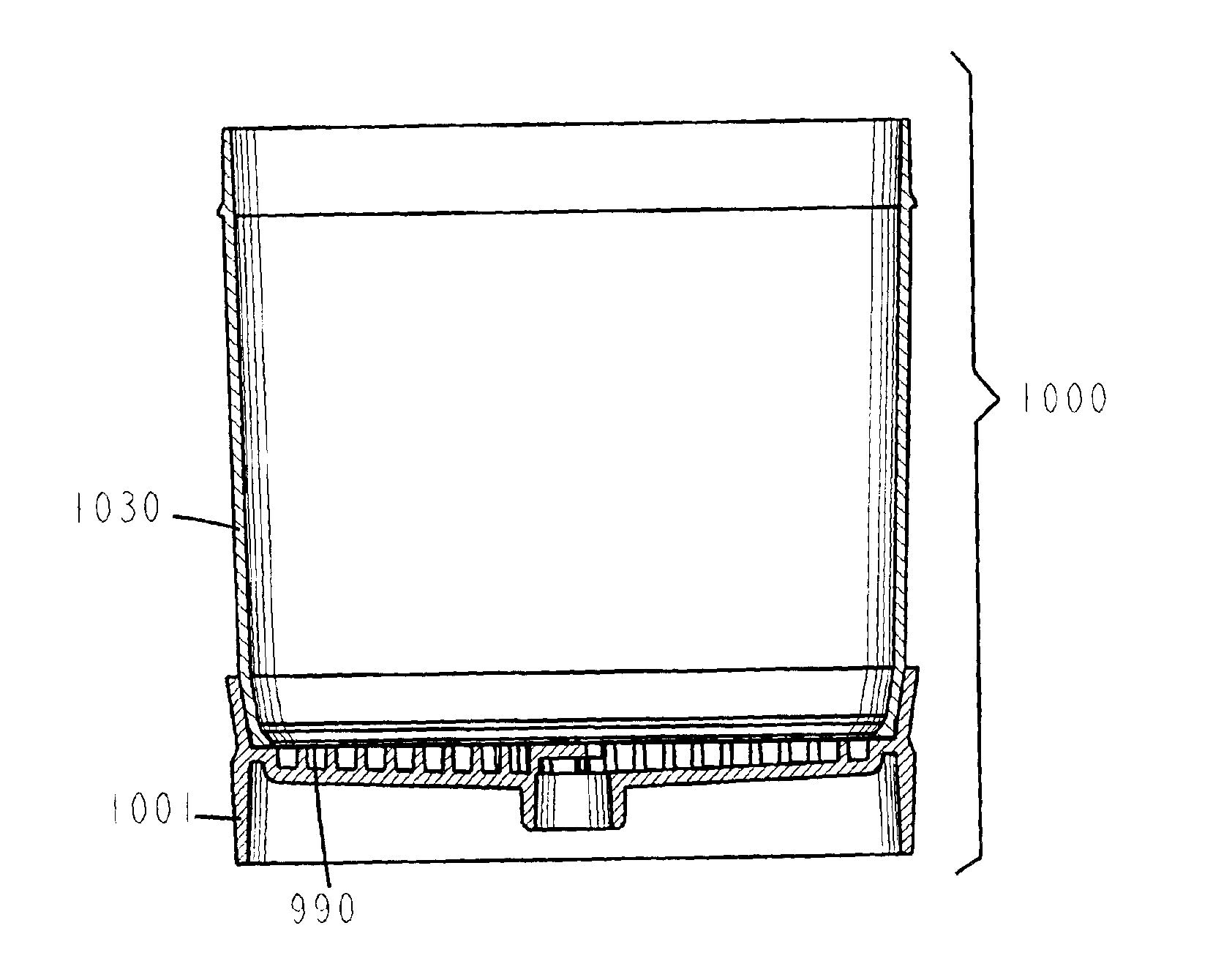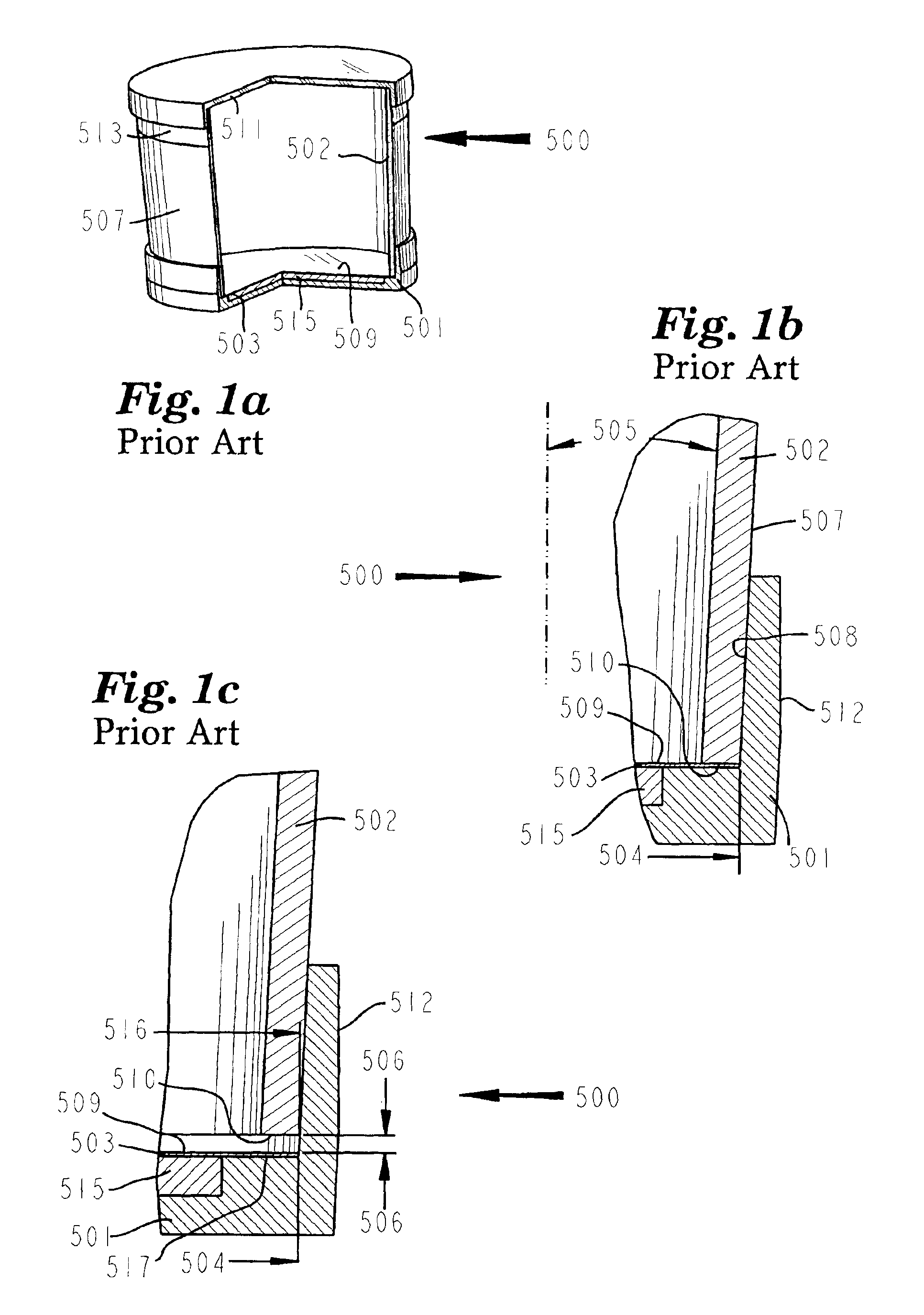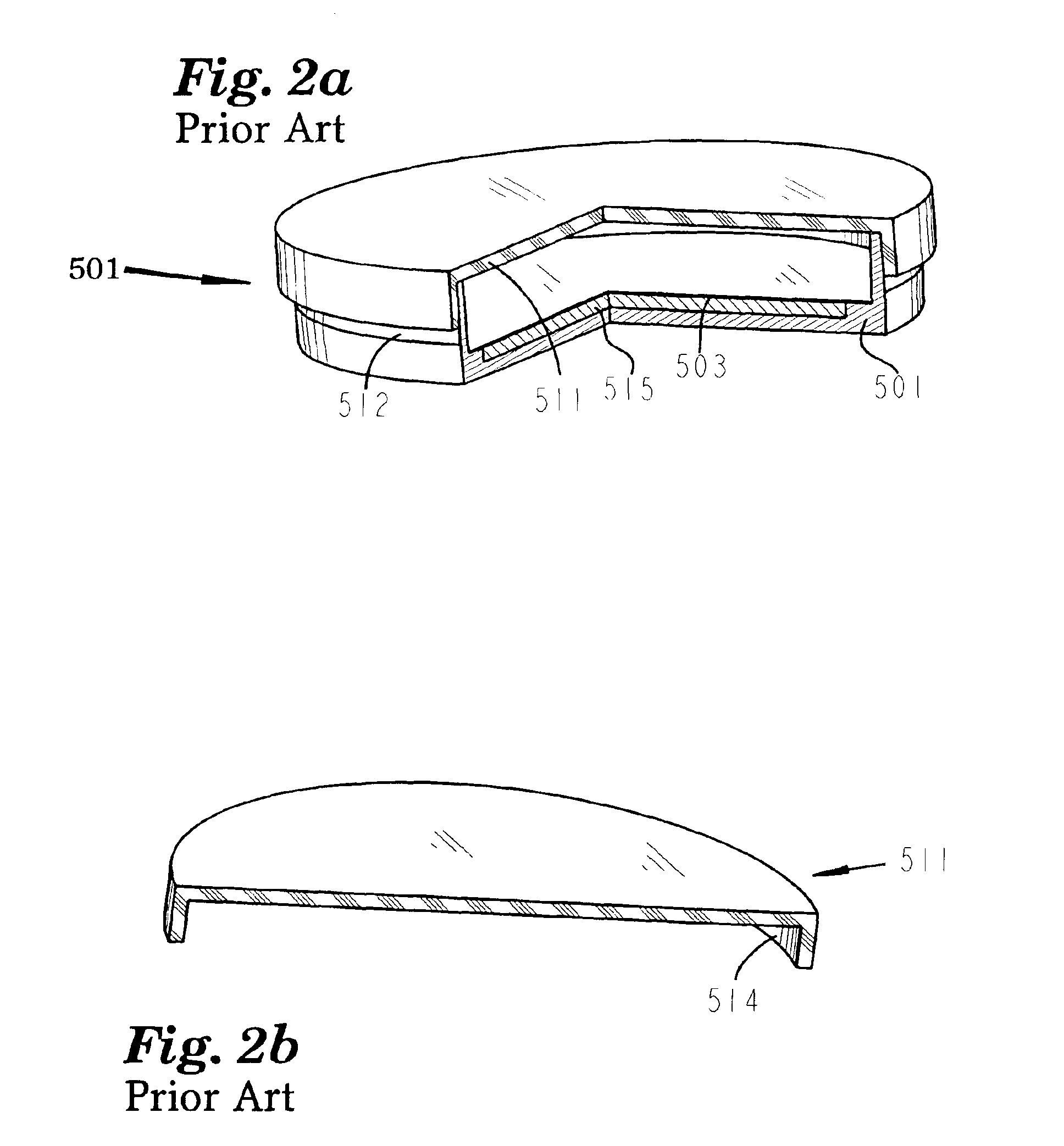Disposable vacuum filtration apparatus capable of detecting microorganisms and particulates in liquid samples
a vacuum filter and liquid sample technology, applied in the field of filtration, can solve the problems of increasing production costs, not being able to easily position the lid, and not being able to mold parts to a dimension tolerance of 0.001′′, so as to achieve the effect of easy positioning the lid 611, reducing production costs, and reducing production costs
- Summary
- Abstract
- Description
- Claims
- Application Information
AI Technical Summary
Benefits of technology
Problems solved by technology
Method used
Image
Examples
first embodiment
[0122]An second embodiment of the filtration apparatus constructed in accordance with the principles of the present invention, is shown in FIG. 16. This embodiment shown as assembly 102 contains the same component parts as the first embodiment described above, with the exception that funnel 30 is replaced with funnel 130. The features of funnel 130 that are identical to those of funnel 30, have been given the same reference numbers as the corresponding feature of funnel 30. In addition to containing all of the features that funnel 30 contains, funnel 130 contains seal bead 180, which protrudes from bottom surface 44, of integral flexible filter seal 38. Although seal bead 180 as illustrated in FIG. 16 is circular in shape, it could be formed from any other shape such as rectangular, elliptical, ect. When funnel 130 is inserted into base 1, integral flexible filter seal 38 of funnel 130 will be compressed as explained above for funnel 30. Hence filter means 90 will be sealed between ...
third embodiment
[0123]the filtration apparatus constructed in accordance with the principles of the present invention, is shown in FIG. 17. Assembly 200 shown in FIG. 17 contains, base 201, funnel 30 (alternately funnel 130 could replace funnel 30), lid 60, filter means 90 (preferably a microporous filter), absorbent pad 91, and lower filter means 90a (preferably a microporous filter). Referring to FIG. 18 and FIG. 18a, base 201 contains funnel well 26, bounded by filter seal surface 11, and inside wall 5. Inside wall 5 contains chamber 20. Base 201 also contains a pad well 27, bounded by lower inside wall 8, and bottom inside surface 9. The outer edge of filter seal surface 11 contains groove 289. Base 201 contains outlet port 10. Bottom inside surface 9 may slope downward from its outside periphery toward outlet port 10. Outlet port 10 is in fluid flow communication with pad well 27. Base 201 also contains a means to support lower filter means 90a, shown here by circular filter support ribs 207, ...
sixth embodiment
[0130]the filtration apparatus constructed in accordance with the principles of the present invention, is shown in FIG. 24 through FIG. 28. FIG. 24 is an exploded view of assembly 700. Assembly 700 contains base 701, absorbent pad 791, filter means 90 (preferably a microporous filter), funnel 730, and lid 60. Base 701 is the same as base 201 shown in FIG. 18 with the exception that base 701 contains three or more filter centering tabs 779 (preferably equally spaced around the periphery of inside wall 705), and a counter bore defined by side wall 751, and chamber 753. Absorbent pad 791 is the same as absorbent pad 91 shown in FIG. 17, with the exception that absorbent pad 791 is thicker than absorbent pad 91. Absorbent pad 791 may be comprised of two or more thin layers of absorbent pad material. Funnel 730 is the same as funnel 30 shown in FIG. 8, FIG. 12, and FIG. 17, with the exception that funnel 730 contains funnel centering tabs 792. Although funnel 730 is shown with one integr...
PUM
| Property | Measurement | Unit |
|---|---|---|
| Angle | aaaaa | aaaaa |
| Thickness | aaaaa | aaaaa |
| Force | aaaaa | aaaaa |
Abstract
Description
Claims
Application Information
 Login to View More
Login to View More - R&D
- Intellectual Property
- Life Sciences
- Materials
- Tech Scout
- Unparalleled Data Quality
- Higher Quality Content
- 60% Fewer Hallucinations
Browse by: Latest US Patents, China's latest patents, Technical Efficacy Thesaurus, Application Domain, Technology Topic, Popular Technical Reports.
© 2025 PatSnap. All rights reserved.Legal|Privacy policy|Modern Slavery Act Transparency Statement|Sitemap|About US| Contact US: help@patsnap.com



